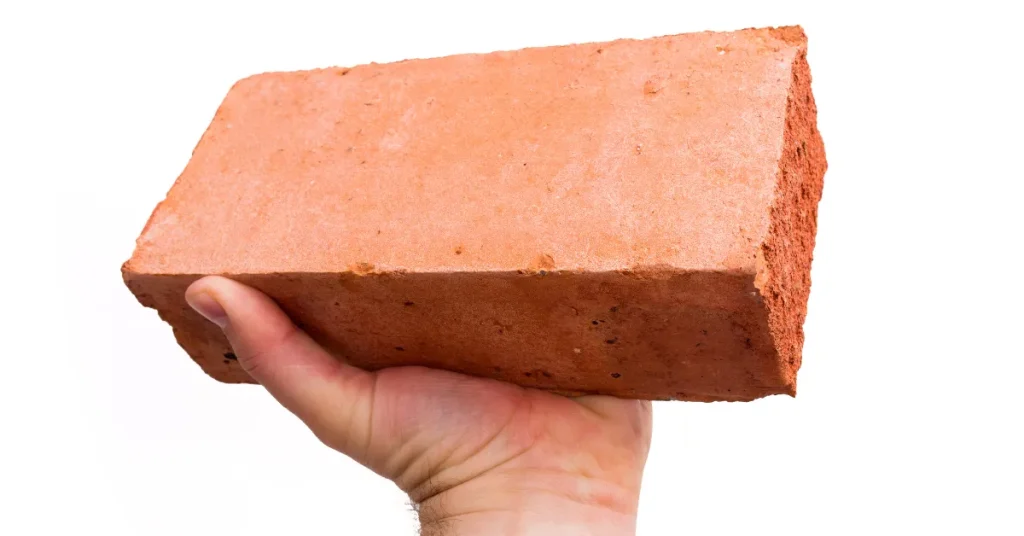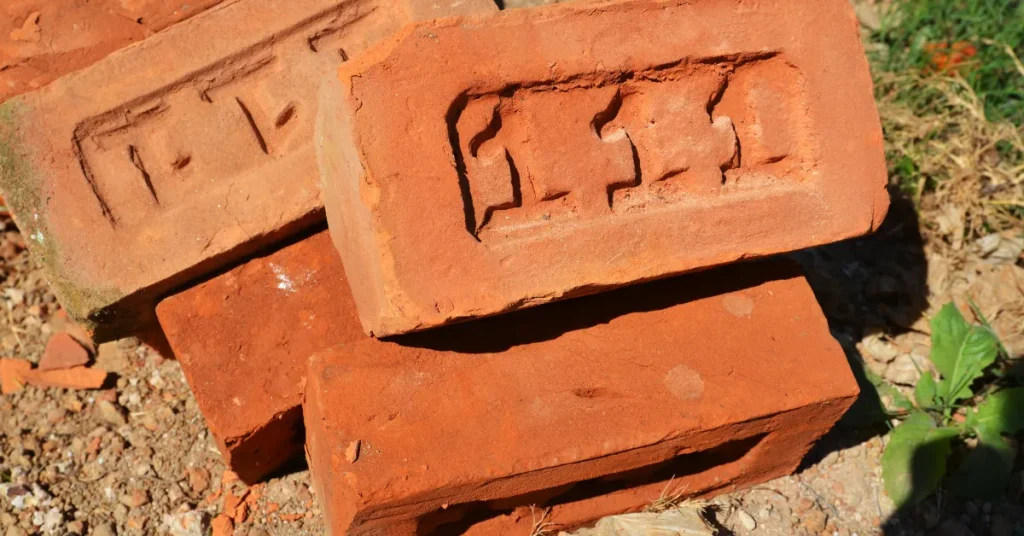A standard brick in the United States is 3.5 inches wide. Other countries may use different standard sizes.
Understanding the dimensions of a brick is essential for various construction projects and architectural designs.
Bricks, the building blocks of many structures, come in various sizes, but there is a common size that many are familiar with.
In the United States, for instance, the most typical brick used for construction has specific dimensions that builders and architects usually refer to.
This standard size influences not only the strength and stability of a structure but also the amount of material required and the overall aesthetic.
When ordering bricks for a project or calculating materials needed, knowing the width of your brick is a fundamental starting point.
Brick dimensions can affect mortar usage, wall thickness, and even the structural design, making this seemingly small piece of information critical to the success of building endeavors.

Brick Dimensions: More Than Just Length And Width
Mention bricks and the image of a rectangular block comes to mind. But there’s more to brick dimensions than meets the eye.
Beyond mere length and width, understanding a brick’s full size includes its height and thickness too. This knowledge is crucial for construction accuracy and design aesthetics.
Breaking Down Brick Measurements
Exactly how big is a standard brick? Let’s dive into the specifics. A typical brick measures about 215 x 102.5 x 65 mm. Yet, these are just the dimensions for a standard UK brick.
Different types exist across the globe, and their dimensions can vary significantly. To fully grasp brick measurements, we must account for regional variations and the purpose of the bricks.
A table of standard brick sizes simplifies understanding:
| Region | Length (mm) | Width (mm) | Height (mm) |
| UK | 215 | 102.5 | 65 |
| US | 203 | 92 | 57 |
| Australia | 230 | 110 | 76 |
Specialty bricks serve specific purposes:
- Fire bricks resist high temperatures
- Engineering bricks boast high strength
- Bullnose bricks have rounded angles
Each specialty brick may have unique dimensions to fit its role.
Comparing Thickness And Height
The brick’s thickness and height are equally pivotal in construction. For walls that need to be sturdy, a thicker and taller brick might be chosen. Conversely, for aesthetic features like veneers, thinner and shorter bricks might be suitable.
Common dimensions of thickness and height are:
- Standard thickness ranges from 57 mm to 100 mm.
- Standard height fluctuates between 57 mm and 76 mm.
Understanding these measurements helps in calculating the volume of bricks needed for a project, influencing the overall stability and appearance of the structure. It’s imperative to match the right dimensions to the building’s requirements.
Standard Brick Sizes: A Global Perspective
Bricks are fundamental in construction, tying to history and culture. Around the world, brick sizes vary. Despite variability, there are some standardized dimensions.
These play a vital part in development, design, and global trade. Let’s explore how wide a brick is, understanding the universal standard brick sizes.
Us Brick Size Specifications
In the United States, bricks follow precise specifications. These ensure consistency in building projects. The most common size is the modular brick, which measures 3 5/8 x 2 1/4 x 7 5/8 inches. This standardization helps with design plans and quantity estimations.
| Type | Size (inches) | Size (mm) |
| Modular | 3 5/8 x 2 1/4 x 7 5/8 | 92 x 57 x 194 |
| Utility | 3 5/8 x 3 5/8 x 11 5/8 | 92 x 92 x 295 |
Uk And Australian Brick Standards
The UK and Australia often share similar standards for brick sizes. A typical brick in these countries measures approximately 215 x 102.5 x 65 millimeters.
In the United Kingdom, this is known as a standard brick. It simplifies construction efforts and material sourcing on both continents.
- Standard UK: 215 x 102.5 x 65 mm
- Standard AUS: 230 x 110 x 76 mm
Variances In International Brick Dimensions
Different countries have their own brick dimensions. These are often influenced by local building practices. International sizes might not match US or UK standards. A broad spectrum of sizes exists, contributing to diverse architectural styles. A few examples include:
- Denmark: 228 x 108 x 54 mm
- India: 190 x 90 x 90 mm
- South Africa: 222 x 106 x 73 mm
Understanding these variances is crucial for architects and builders. It ensures they design structures that are not only sound but also culturally appropriate.
Knowledge of size differences enables efficient collaboration and materials exchange in our increasingly connected world.
More Than One Answer: Types Of Bricks And Their Measures
Bricks come in different shapes and sizes. Each type has unique measures. Builders choose bricks based on project needs.
The size of the brick can affect the structure’s appearance and strength. Let’s explore the common types of bricks and their dimensions.
Traditional Clay Bricks
Clay bricks are popular for their classic look. Most clay bricks measure:
- Length: 215 mm
- Width: 102.5 mm
- Height: 65 mm
These dimensions make the bricks perfect for many buildings. The classic size is also known as the standard UK brick.
Concrete Blocks And Bricks
Concrete bricks are larger than clay bricks. They support heavier loads. A standard concrete block measures:
| Length | 440 mm |
| Width | 215 mm |
| Height | 100 mm |
These concrete blocks are great for strong walls.
Specialty Bricks And Their Unique Sizing
Specialty bricks are for unique needs. These bricks can be different shapes. They can have various sizes. Here are some examples:
- Engineer bricks: High strength and water resistance.
- King size bricks: Larger face size for a smoother look.
- Utility bricks: Economical and often slightly larger.
Each specialty brick has its purpose. The engineer brick is very strong. It is usually 102.5 mm wide and 65 mm tall.
Functions Dictate Form: How Brick Size Affects Use

The dimensions of a brick may seem like a small detail. Yet, it holds great importance. Functions Dictate Form: a concept whereby brick size shapes its purpose.
In building and architecture, form always follows function, and it is no different for bricks. Whether it’s bearing the weight of a skyscraper or creating a cozy fireplace, the size of the brick matters.
Structural Requirements And Brick Selection
Bricks are the backbone of many structures. The right size ensures stability and longevity. For load-bearing walls, engineers prefer larger bricks. Larger bricks mean fewer joints and a stronger wall.
Common brick sizes include:
- Standard US Size – 3 5/8 x 2 1/4 x 8 inches
- Standard UK Size – 215 x 102.5 x 65 millimeters
- Queen Size – 3 x 3 x 10 inches
- King Size – 3 1/8 x 2 3/4 x 10 inches
Each project requires a careful selection based on construction codes and design specifications.
Aesthetic Considerations In Brick Size
Visual appeal is critical when choosing brick size. Smaller bricks can enhance texture and detail, ideal for features like arches or patterns. Larger bricks offer a clean, streamlined look, great for modern designs.
Designers think about:
- Color
- Texture
- Size in relation to the overall scale
These factors combine to create the desired architectural expression and charm.
Energy Efficiency And Brick Proportions
Brick dimensions can influence a building’s thermal performance. Smaller bricks have more mortar joints, which can lead to higher heat loss. Larger bricks with fewer joints improve insulation.
| Brick Size | Thermal Efficiency |
| Small | Less efficient |
| Large | More efficient |
Builders use larger bricks to conserve energy and reduce costs. It’s a move towards sustainability in construction.
Beyond The Size: Brick-laying Patterns And Their Impact
Bricks may seem like simple building blocks, but the way they’re laid out can drastically change a structure’s look and stability. The choice of brick-laying pattern, also known as the bonding technique, doesn’t just contribute to the exterior charm.
It also influences how builders measure and cut bricks for construction, affecting material needs and project timelines.
Common Bonding Techniques
- Running Bond: Bricks overlap at the halfway point on each row.
- Stack Bond: All bricks align directly above each other for a grid effect.
- Flemish Bond: It alternates long and short sides of bricks, creating a patterned look.
- English Bond: Features alternating rows of full-length and header bricks.
- Herringbone: Arranges bricks at 45 or 90-degree angles for a zigzag pattern.
- Basketweave: Pairs of bricks laid flat next to pairs standing upright.
How Patterns Influence Brick Measurements
In a perfect wall, every brick would fit without cuts. Yet, most patterns need bricks of various dimensions. Let’s dive into how patterns reshape brick measurement standards:
| Pattern | Regular Brick Size | Adjusted Measurement |
| Running Bond | 7 5/8″ x 2 1/4″ | No cut needed |
| Flemish Bond | 7 5/8″ x 2 1/4″ | Half bricks required |
| English Bond | 7 5/8″ x 2 1/4″ | Header bricks at 3 5/8″ |
| Herringbone | 7 5/8″ x 2 1/4″ | 45° cuts for edges |
Patterns add visual interest but change how many bricks fit in a given area. For instance, the herringbone pattern requires more cuts, which might lead to more wasted materials. Consequently, builders must plan for extra bricks.
The relationship between pattern and size shows that brick-laying is an art balanced with precise mathematics. Understanding these influences helps in creating beautiful, long-lasting structures.
Navigating Brick Size Variations For Your Project

Navigating Brick Size Variations for Your Project is key to the success of any construction or DIY endeavor. Not all bricks are made equal, and selecting the right size and quantity can be a puzzle.
Understanding the common dimensions and when to opt for custom bricks ensures a seamless build out.
Calculating Quantities: Size Matters
Knowing the size of your bricks is crucial when planning your project. Standard US bricks typically measure about 8 inches (length) x 2 1/4 inches (height) x 3 3/4 inches (width).
Yet, sizes can vary, influencing the number of bricks needed. To calculate quantities, follow this simple process:
- Measure the area to cover (length x height).
- Determine the size of the bricks being used.
- Account for mortar space, usually 3/8 inch.
- Use a brick calculator or a manual formula to estimate required bricks.
Here’s a handy table to help you with manual calculations:
| Brick Size (inches) | Bricks per Square Foot (approx.) |
| 8 x 2 1/4 x 3 3/4 | 7 |
| Other sizes | Varies |
Custom Bricks: When Standard Sizes Don’t Fit
Untypical designs require custom bricks. Whether you need to match historic styles or have unique design elements, custom-made bricks enable you to:
- Achieve a specific look that standard bricks can’t.
- Ensure the bricks fit perfectly for a unique project space.
- Maintain the structural integrity in non-standard applications.
Connect with manufacturers for custom orders. Provide dimensions, color, and texture specifications.
FAQs About How Wide Is A Brick
How Wide Is A Single Brick?
A standard single brick width measures about 3. 5 to 3. 625 inches (90 to 92 mm). Different countries may have slight variations in size.
What Is The Width Of 1 Brick In Inches?
The standard width of a brick is approximately 3. 5 inches.
How Wide Is A Brick With Mortar?
A brick with mortar typically measures about 8 inches in width. This includes a standard brick size and the mortar joint.
How Wide Is A Brick Uk?
A standard UK brick measures approximately 215mm in width. This dimension is consistent across most brick types used in British construction.
Conclusion
Wrapping up our exploration of brick dimensions, remember that standard bricks typically measure about 8 inches in length, 3. 5 inches in width, and 2. 25 inches in height.
While sizes may vary, these measurements provide a solid foundation for planning construction projects.
Mastering these basics will ensure your builds stand strong and look great.
